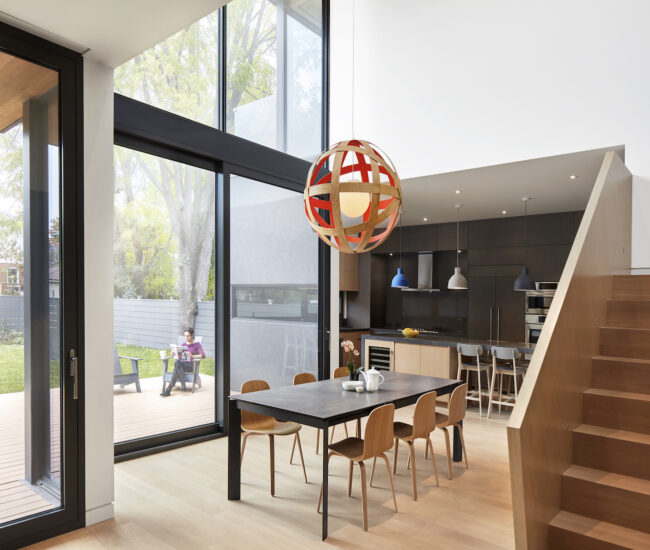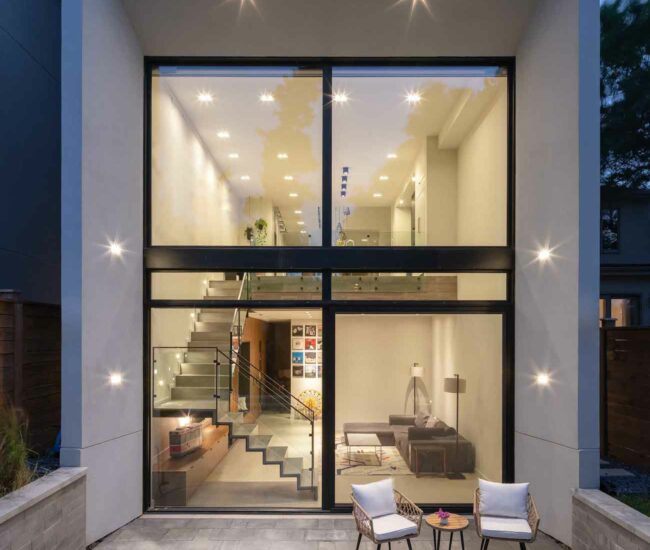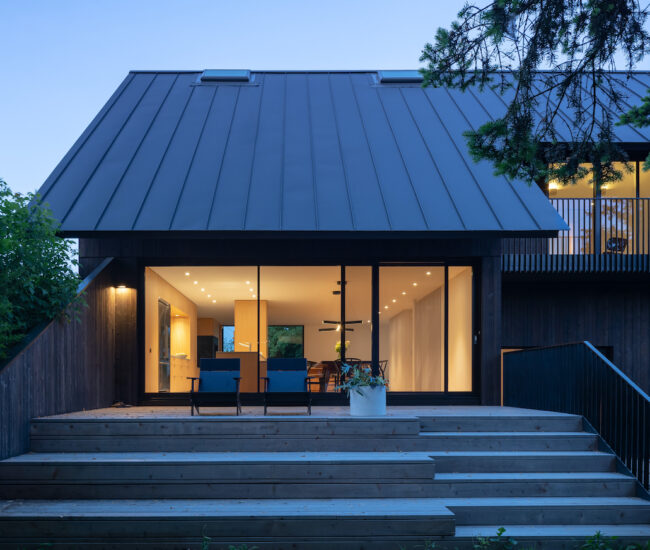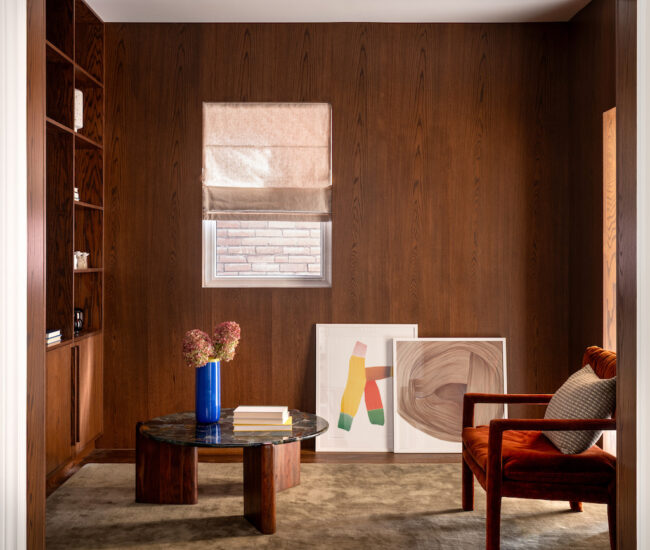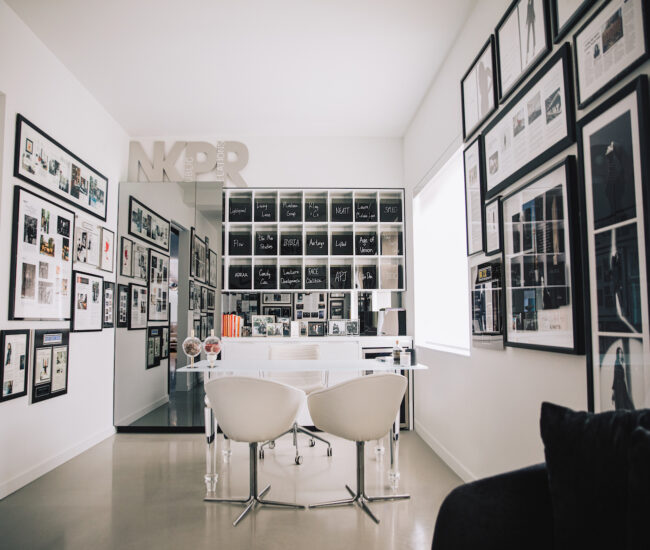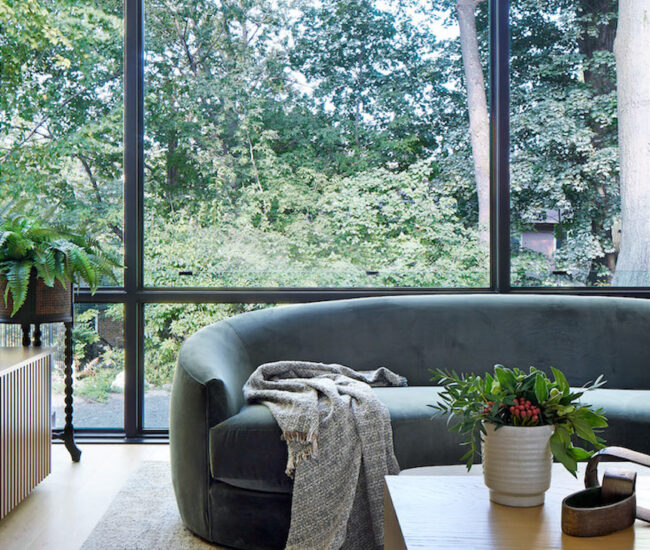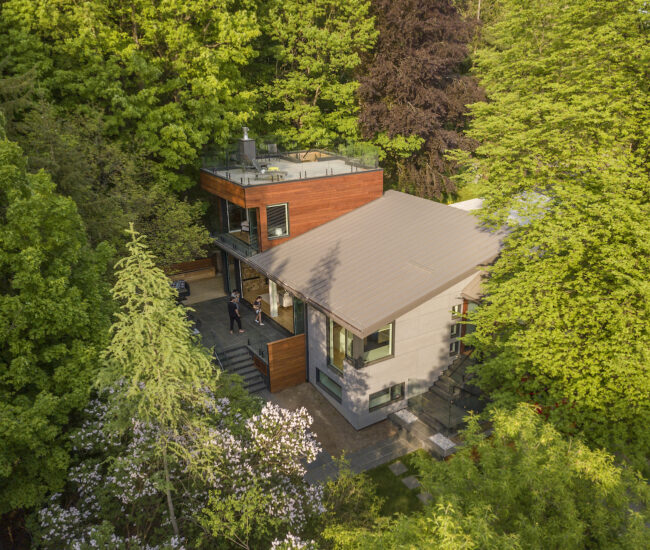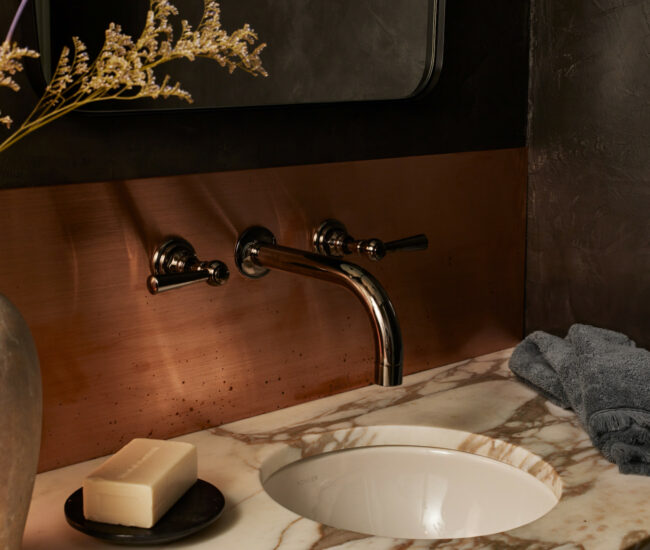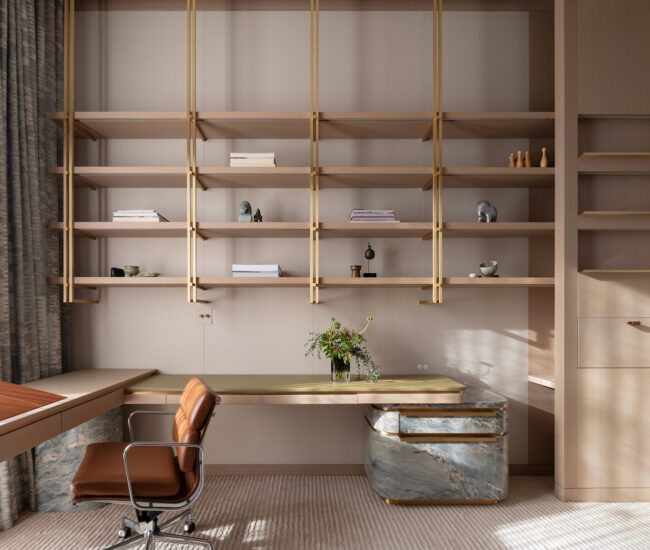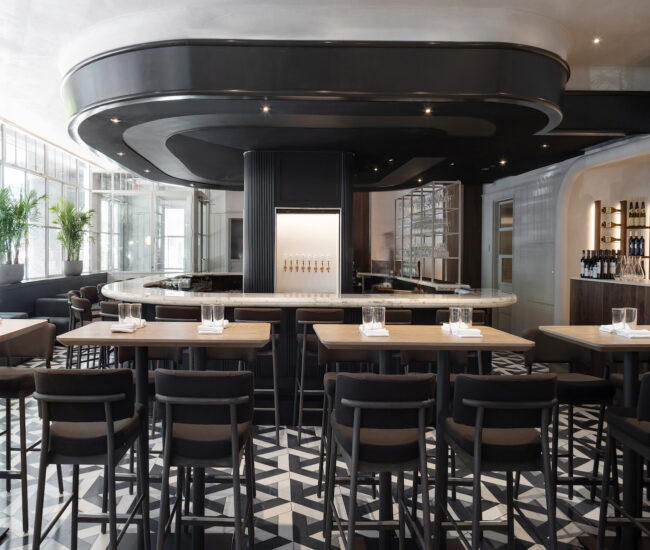The Evolution of Workspace Design
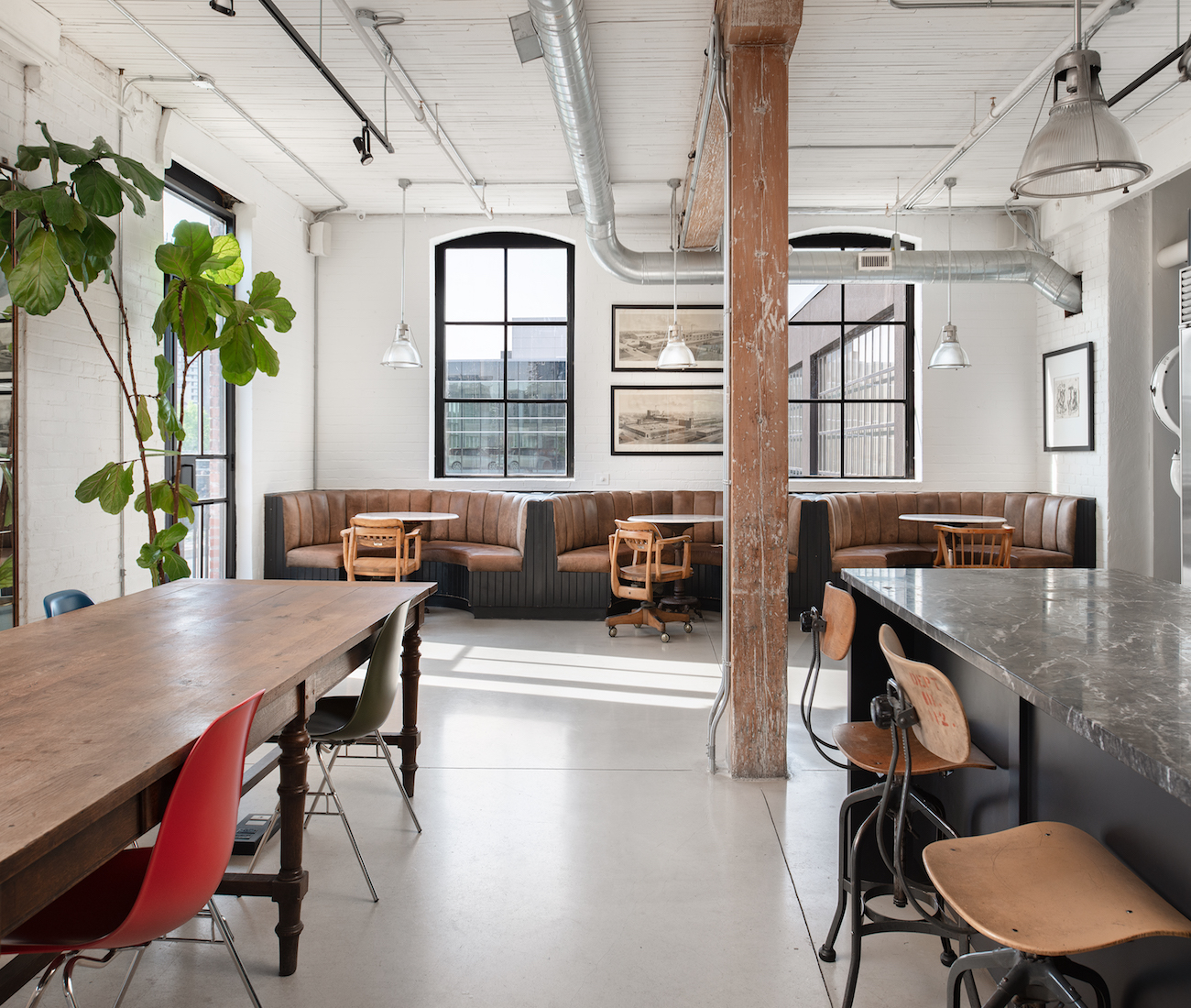
Offices in Toronto are ditching rigid design schemes in favour of flexible and boutique concepts
The purpose of the office has changed more in recent years than in the last century. While productivity remains a top priority, evolving workspace design reflects a growing emphasis on well-being, collaboration, and community. We visited three innovative workspaces in the city leading a collective shift toward the future of work. Beyond Instagram-worthy interiors, what we found were three unique approaches to work-life balance, each inspired by the power of design.

East Room
A standout among Toronto’s small offering of boutique-style coworking spaces, East Room has long been a hoteling destination for entrepreneurs, freelancers and creatives since 2014. The company’s founding Riverside location boasts more than 60,000 square feet of communal and private office space for its members, with interiors inspired by the century-old warehouse building’s architecture. Though, beyond its beauty, East Room is a workspace designed to flip the traditional desk job lifestyle on its head. “The typical work environment is very much under scrutiny,” says president and co-founder Derreck Martin. “More and more people are seeking flexible office options where they don’t need to lock themselves into a long-term lease, but can still access the social value that comes with a shared working environment.”

A combination of enclosed offices, meeting rooms and open-concept seating makes for a variety of workstations designed to accommodate different needs. On the main floor, as well as in the newly renovated basement event space, East Room’s iconic lounge areas make for casual meeting grounds.
With an opportune background in design as a third-generation antique dealer, Martin led the design of the space and the furniture configurations. “We work with an army of suppliers, artisans, and artists locally and internationally,” he says. “Whether it’s a glass blower in Brooklyn, who specializes in hand-blown neon, or a local Toronto artist like Brian Rideout, whose work is featured in one of our lounges.” The result is a workspace design as well curated as any Toronto art gallery or showroom. “It boils down to creating a space where people want to spend their day.”

With the renovation of East Room’s lower-level event space complete, the team’s sights are set on another project: a new location at 507 King Street East featuring a rooftop lounge and patio that will operate as a cafe during the day and a cocktail bar in the evening, along with a 10,000-square-foot event space with 19-foot ceilings and a built-in stage. The physical expansion works in tandem with East Room’s conceptual expansion to serve members beyond the hours of nine to five. “Going forward, our goal is to build on the social aspects our members value through more amenities, exclusive events, and entry options that appeal to a wide range of clients,” says Martin.

Mason Studio
In the city’s Junction Triangle, Mason Studio‘s workspace design is heavily informed by its surrounding environment and the local community. The interior design practice has a knack for attracting passersby into its doors by way of public events, workshops and captivating art installations. “Our office allows us to have different work experiences and opportunities to welcome people who we may not have had the chance to engage with otherwise,” says founding partner Stanley Sun. Since its inception in 2011, the studio has centred its practice around the anatomy of design, and its office (a space in constant evolution) is designed to further inspire that mission.

What differentiates Mason Studio from other offices, and design studios for that matter, is its open door to the public. In conjunction with DesignTO, Mason Studio exhibited An Optimistic Future earlier this year. The concept housed several installations including a vertical farm, a new retail space and an educational studio for kids. “A lot of the programs that we’re putting together are geared towards providing youth with an experience in design,” says Sun. “We’re always trying to better understand what kind of impact our space is going to have on the local community. So we’re working with residents to break down that barrier and operate as more than just an office.”

With a community-focused approach, Mason Studio is an undeniable case study in designing the workspace of the future. “All spaces, in essence, are for people,” says Sun. “What differs for us is that our decision-making is not about what something looks like, but what we fundamentally need to thrive as human beings.” This belief is reflected in every aspect of the studio, from lighting and sound to ergonomics and installations. Above all else, Mason Studio’s workspace design is one driven by diversity and where creativity runs free.

The Combine
Dubbed an experiment in progress, The Combine by Tadiem Inc. [he parent company of creative agencies Narrative, Bensimon Byrne, OneMethod and Folk] is a new workspace blending the purposes of a studio, retail space and office all in one. Upon entering its downtown location, at the corner of Wellington and John Streets, a pop-up shop greets members on the first floor. “By removing a traditional reception desk and replacing it with a retail rotation, entering the space feels more welcoming and relaxed,” says Amin Todai, founder & CCO at OneMethod — the design agency responsible for leading The Combine’s 2022 interior renovation. Climbing a stairwell will take you to the second floor, where a café collaboration with The Bevy services a coffee shop-style workspace equipped with open-concept tables, meeting rooms and a collection of soundproof phone booths for calls and virtual meetings.

Todai and The Combine team worked with local interior design studio Solid Design Creative to transform the traditional office setting into an expansive workspace centred around the design ethos of hospitality. “Instead of working with a design studio that specializes in offices, we intentionally chose Solid Design Creative for its reputation designing some of the city’s best restaurants,” says Todai. “We wanted that hospitality mindset to be present in every design element.”
Inspired by the city, The Combine’s floor plan resembles a network of neighbourhoods with distinct personalities from Fashion District-inspired breakout rooms sporting Gucci wallpaper to a dive bar reminiscent of West Queen West. “With this blueprint, we chose to take an urban planning-style approach where you can turn the corner and feel like you’re in an entirely new setting,” says Todai. “With no fixed desks, some members choose to start their day at one spot then migrate to another, and maybe end their day at the bar for a drink,” says Tadiem Inc. CEO Sarah Spence. Whatever your working style, The Combine seems to have designed an area specifically for it. Through this, the concept’s client list varies across a wide range of industries from global automotive to local fashion designers and tech startups — each finding a comfortable home in The Combine.

True to its tagline, The Combine’s workspace design is in constant experimentation. “If an area isn’t being used very much, it gets repurposed based on what members are gravitating toward,” says Todai. “I think this concept is also a driving factor to our positive retention; the workspace is always adjusting to the changing needs of our members.” Along with an in-house basketball court, public events and a growing workshop series, this innovative take on the office might just be the blueprint larger companies across Toronto need to future-proof their traditional spaces into something where mandates don’t command employees but good vibes do.

